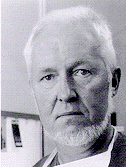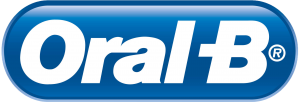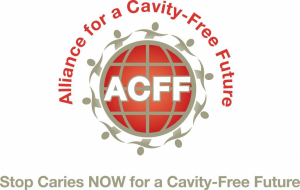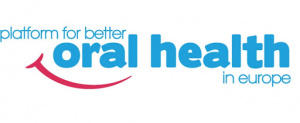
NEWSLETTER Number Two June 1995
<div><a href="#part1">Message from the President</a><br>
<a href="#part2">Stop Press Congress Abstracts</a><br>
<a href="#part3">Education Committee Report<</a><br>
<a href="#part4">Reports from the Groups</a><br>
<a href="#part5">Conference Report</a><br>
<a href="#part6">Membership</a><br>
<a href="#part7">Erik Kisling<</a><br>
<a href="#part8">Burges 1996, Provisional Program</a><br>
<a href="#part9">Future Meetings</a><br>
<br>
<div id="part1">
<font size="3"><strong>Message from the President.<br>
</strong></font><br>
<strong><font size="3">Amalgam in Children's Dentistry ?<br>
The Swedish Situation</font></strong>
<p>
<img src="img/ImagN1-1.gif" alt="" align="left">The use of amalgam in dentistry, and for children in particular, has attracted wide attention recently in many countries. In Sweden during the last 10-15 years there has been intense debate about the effect of amalgam/mercury and general health. The situation in other European countries differs considerably (Second Report on Amalgam in Dentistry. European Opinions and Attitudes, ERO,1995). The National Board of Health and Welfare (NBHW) in Sweden has initiated a number of investigations and scientific reviews on the safety of amalgam - the conclusions of this extensive report are:
</p>
<p>
'there is no general health hazard from amalgam restorations.'
</p>
<p>
However, in Sweden the Parliament decided for environmental reasons to eliminate mercury from circulation in nature. This also has implications for dentistry. Therefore the NBHW was asked to suggest a plan as to how mercury (amalgam) should be excluded in dentistry. They recommended a stepwise elimination starting with children and then adults. The Ministry of Health and Social Affairs was asked to negotiate with the Federation of County Councils (responsible for all children's dental care) as to how such a recommendation should be formulated.
</p>
<p>
On April 20,1995, there was a signed agreement between the Ministry of Health and Social Affairs and the Federation of County Councils, saying that each county council should try and eliminate amalgam in the treatment of children starting on July 1 1995. Amalgam should only be used in very special situations when other types of treatment are not of benefit to the patients. These special situations are defined as:
</p>
<p>
in cases with heavily malformed teeth where chewing forces would fracture restorations with other materials.
</p>
<p>
<br>
when treatment is performed under general anesthesia and the use of other techniques will mean another session under general anesthesia
</p>
<p>
<br>
if it is not possible to keep a 'dry field' long enough to perform a restoration with an alternative material.
</p>
<p>
This proposal, with the above clauses, was approved by the Swedish Government on May 11,1995.
</p>
<p>
They will be of interest to all paediatric dentists throughout Europe. There will probably be further developments in this area and we will keep you up to date on this matter.
</p>
<p>
</p>
<p>
Goran Koch
</p>
</div>
<p>
</p>
<p>
<br>
--------------------------------------------------------------------------------
</p>
<div id="part2">
<br>
<font size="3"><strong>Stop Press: Congress Abstracts</strong></font>
<p>
Following the successful format used for the 1994 EAPD Congress, abstracts for the Congress in Bruges will need to be submitted by December l5th,1995. The format will be the same as in 1994, but new abstract forms will be available in September from Luc Martens.
</p>
</div>
<p>
</p>
<p>
<br>
--------------------------------------------------------------------------------
</p>
<div id="part3">
<br>
<strong><font size="2">Education Committee Report</font></strong><br>
Training Guidelines in Paediatric Dentistry Completed
<p>
</p>
<p>
<strong><font size="3">Publication of Training Guidelines</font></strong>
</p>
<p>
Copies of the Training Guidelines in Paediatric Dentistry are now available for members to obtain and study. They can be obtained from either the Chairman or the Secretary. The aim is that all new and existing programs will conform to 75% of the guidelines and the remaining 25% would be for local and national needs. A second edition has been developed by the committee and will be available at the IAPD meeting in Gotenburg.
</p>
<p>
Recently the University of Gent has moved to a full time three-year (36 months) program. This conforms to the existing programs in Sweden and elsewhere. The Workshop at the Congress in Athens concluded that all future training courses for specialization in Paediatric Dentistry should be at least three years long.
</p>
<p>
Accreditation of <br>
Training Programs
</p>
<p>
The education Committee has now initiated a system where training programs can be visited and accredited by the Academy. The aim is that programs would be assessed as conforming to the EAPD guidelines and also that dentists graduating from these programs <br>
<br>
would be entitled to automatic membership of the Academy. This would encourage membership and also make the application process much quicker. Looking ahead to the future and European wide recognition of the speciality there will be a need for programs that meet the necessary standards.
</p>
<p>
The first step has been to try out a method of visiting and assessment of programs. On April 25 & 26 Professors Koch and Martens visited Leeds Dental Institute for two days. During this trial run visit the clinical facilities, staff support, patient load, didactic course (seminars and lectures etc) and quality of paediatric dental care were looked at. From this experience the necessary documentation will be developed for use at future visits. It is planned that each visit will be carried out by two senior Paediatric Dentists from other European centres. Once the guidelines for visits have been developed they will be published and available for all program directors. Directors of existing programs should write for further details to the Chairman of the Education Committee.
</p>
</div>
<p>
Luc Martens
</p>
<p>
<br>
--------------------------------------------------------------------------------
</p>
<div id="part4">
<br>
<font color="#000000">Reports from the Groups</font>
<p>
</p>
<p>
<strong><font size="2">Greek</font></strong>
</p>
<p>
A recent meeting of the Greek Group of the EAPD decided that the group would meet at least twice a year in order to increase cooperation and to bring about changes in Paediatric Dentistry within Greece. The group will seek recognition of the speciality within general dental practice. This will be achieved by publicity to increase public awareness of the need for high quality care of children with the public at large. They will seek the cooperation of general dental practitioners and also among related specialties such as pediatricians and all other medical specialties that deal with children (ENT, Obstetricians etc).
</p>
<p>
At the Pan Hellenic Paediatric Dentistry Meeting,19-21 May, Prof. Oulis will lead discussions on the role of Paediatric Dentistry, Prof Papagiannoulis on Law, Ethics and Quality assessment in Paediatric Dentistry and Prof Kouvelas on cooperation between the dental specialties.
</p>
<p>
Lisa Papagiannoulis <br>
<br>
<strong><font size="2">British</font></strong>
</p>
<p>
At the scientific meeting of the British Society of Paediatric Dentistry, in York in September, 1994, a short meeting was held of the British members of the European Academy of Paediatric Dentistry. This was to discuss the position of Counselor as John Roberts was devoting more of his time to the job of Treasurer.It was decided that Ron Brandt should take over the role of Counsellor for the British Group.
</p>
<p>
At the meeting of the British Society of Paediatric Dentistry in Windermere papers were given on sedation (relative analgesia) and on health services research. Developments in children's dental care under the system of capitation within the general dental services attracted a lot of discussion. There has been a growing concern in the UK that under capitation, where dentists are paid a fixed sum of money each year, children with high levels of dental disease are not being cared for to the standard necessary.
</p>
</div>
<br>
--------------------------------------------------------------------------------
<div id="part5">
<br>
<font size="2">Conference Report<br>
"Towards a European College of Dentistry." <br>
May 5-6 1995, Royal College of Surgeons, London</font>
<p>
</p>
<p>
The concept of a European College of Dentistry has been talked about for some years. With the advent of the European Union an initiative has been taken to enable a full and free discussion on a set of proposals which could be the first step towards the creation of a Euopean College of Dentistry. The European Academy was represented at this meeting by Martin Curzon, John Roberts and Ron Brandt.
</p>
</div>
<p>
The meeting was opened by Prof Shanley (Ireland) who gave an introduction as to why there should be a European College of Dentistry. Professor Shanley outlined the various areas of dentistry which might be covered by such a College, such as undergraduate education, specialisation, continuing education and vocational (post-qualification) training. Other presentations were given by speakers such as Professor Konig (Nijmegen) on systems of visitations to approve training in dental schools and Professor Sanoz (Madrid) on Erasmus programs for the exchange of dental students. Professor Harvey (London) gave an interesting review of the experience of Medicine in the area of specialisation within Europe and the difficulties where each country had different views as to how many specialties there should be.
</p>
<p>
The delegates, representing many national and European organizations, were divided up into four workshops to review various aspects of the proposal for a European College. These were a: Undergraduate education, b: Speciality training and assessment, c: Continuing professional education, and b: Research. These deliberated and then reported back to the conference at the end of the first day. Of interest to EAPD was the inclusion of Paediatric Dentistry as speciality, although as happens far too often, not as a major <br>
<br>
speciality where only Oral Surgery and Orthodontics are recognized in the European Union. It was disturbing that some delegates reported that only Oral Surgery and Orthodontics were recognized as specialists in their countries and the only ones likely to be so.
</p>
<p>
On the second day presentations were given by the various European specialist organizations detailing their current activities and plans for the future, which included the EAPD. It was obvious that there was a great deal of variation between the specialties although the EAPD's efforts on guidelines was at the forefront of the field.
</p>
<p>
Further workshops were held in the second afternoon on the function of the proposed College, its structure, its finance and its location. As before reports were given to the assembled delegates. However it became clear as the conference reached this point in its discussions that there were very wide differences in views. These varied from total support of the concept to outright opposition. After tea on the last day the full assembly debated a proposition that it was agreed in principle that a College should be formed. However here again there was a lengthy discussion which became at times quite heated. After an hour of discussion it became apparent that an agreement on this proposal could not be reached and the proposal was withdrawn. A second proposal, however, that a steering committee be formed to continue to consider the question of a European College of Dentistry found much greater support and this was accepted. It should report within a year.
</p>
<p>
Martin Curzon
</p>
<p>
<br>
--------------------------------------------------------------------------------
</p>
<div id="part6">
<br>
<strong><font size="3">Membership</font></strong>
<p>
</p>
<p>
The membership continues to grow and by the end of April there were 285 members in the various membership categories. At the same time there are some 12 applications under consideration. The Credentials Committee continues to try and process applications as quickly as possible but applications are not always complete or in the right presentation. Applicants should complete an application form, available from the Secretary, or a Counsellor, and send it with a short two-page curriculum vitae and a copy of the certificate of their training program in Paediatric Dentistry. Applications must be in English.
</p>
<p>
Discussions are under way with our sister organizations, American, Canadian and Australasian Academies, for a system of recognition of memberships. The aim is that members may attend the respective annual or biannual meetings and to be able to register as members and not visitors. The discussions continue and we will keep members advised of the outcome.
</p>
</div>
<p>
<br>
--------------------------------------------------------------------------------
</p>
<div id="part7">
<br>
Erik Kisling 1916-1995
<p>
</p>
<p>
It is with sadness that we report the death of Erik Kisling, an Honorary member of the EAPD, and one of the original group of dentists who did so much for the early foundation of the speciality in Europe. Erik Kisling graduated in Denmark (1939) and was an early advocate of the dental care of children in the Danish Public School Dental Service. Kisling was active in founding the Nordic Pedodontic Society and President of IADC (from 1973-75).
</p>
</div>
<p>
<br>
--------------------------------------------------------------------------------
</p>
<div id="part8">
<br>
Bruges 1996: Provisional Program<br>
June 8 - 11th, 1996
<p>
</p>
<p>
PRE-CONGRESS COURSES
</p>
<p>
Trauma Update<br>
Friday June 7th <br>
All day program <br>
Professor Jens Andreason, <br>
Royal College of Dentistry, <br>
University of Copenhagen, <br>
Copenhagen, Denmark.
</p>
<p>
This course will give an update on the latest research and techniques for the treatment of oro-facial trauma in children and young adults.
</p>
<p>
Sedation in Peadiatric Dentistry<br>
Saturday June 8th <br>
Morning Half Day, 9.00 -13.00 <br>
Dr Anna-Lena Hallonsten <br>
Institute for Postgraduate <br>
Dental Education, <br>
Jonkoping, Sweden.
</p>
<p>
This course is designed to give training and instruction in sedation with particular reference to relative analgesia and intra-venous sedation.
</p>
<p>
Intercertive Orthodontics<br>
Saturday June 8th, <br>
Morning, Half day, 9.00-13.00 <br>
Prof. Luc Dermat. <br>
Dept. Orthodontics, <br>
University of Gent, Belgium.
</p>
<p>
This course will cover aspects of interceptive orthodontics including six year molar problems and premolar transplants.<br>
<br>
"<font color="#000000">SECOND MILUPA SYMPOSIUM ON NURSING CARIES</font>"
</p>
<p>
The objective of this pre-congress symposium is to follow on from the first meeting, held in Darmstadt in 1994, with the latest research, prevention and clinical findings. This is a free symposium for all Paediatric Dentists wishing to attend and will be generously sponsored by Milupa.
</p>
<p>
The Provisonal Program and Speakers will include "Current research" Dr Graham Roberts (London), "Risk Factors" Dr Lillkari Wendt (Jonkoping), "Preventive Strategies and Education" Dr Maxine Pollard (Leeds), "National Nursing Caries Preventive Program in The Netherlands" Dr Til van den Sanden (Nijmegen) and "Restoration of Nursing Caries" Dr John Roberts (London).
</p>
<p>
CONGRESS PROGRAM
</p>
<p>
Glass Ianomers and Fluonde Releasung Adhesives
</p>
<p>
Developmental Disorders in Children
</p>
<p>
Dental Care of Children in Europe
</p>
<p>
Oral and poster sessions will be held on all of the, above topics and any others based upon submitted abstracts. Deadline far abstracts will be December 15th. Further details will be in the next issue of the Newsletter.
</p>
</div>
<br>
--------------------------------------------------------------------------------
<div id="part9">
<br>
<strong><font size="3">Future Meetings</font></strong>
<p>
</p>
<p>
Europe:<br>
EAPD<br>
1996 June 8-llth Bruges, Belgium<br>
Co-President - Prof Luc Martens <br>
1998 June - date and place to be finalised. <br>
EAPD Congresses are held every other year<br>
to alternate with the IAPD Congresses. <br>
IAPD <br>
1995, 8-11 th June, Goteborg, Sweden <br>
Details: Dr S. Edward, University of Goteborg,<br>
Faculty of Odontology, Medicinaregatan 12<br>
S-41390, Goteborg, Sweden.<br>
Tel: 46 317733146. Fax: 46 36 712235 <br>
Nordic Pedodontic Society<br>
1996 Iceland (Date and place TBA)
</p>
<p>
<br>
Overseas:<br>
IAPD<br>
1997 16-21 st Sept. Argentina <br>
1999 (TBA) <br>
AAPD<br>
1995 25-30th May, San Francisco <br>
1996 26-31 st May, Chicago <br>
1997 (Date TBA) Philadelphia <br>
A/NZAPD <br>
1995 25-27th Aug Queenstown, NZ. <br>
1997 (Date TBA) Australia
</p>
<p>
Newsletter Editor:<br>
Dr Maxine Pollard<br>
Asst. Editors:<br>
Dr Sue Hickson Dr Jack Toumba
</p>
</div>
<p>
</p>
<br clear="all"></div>



